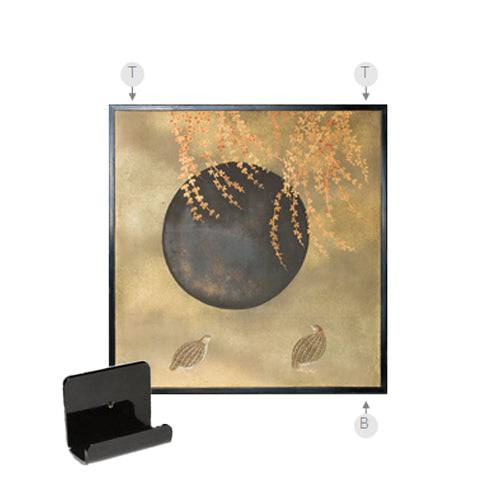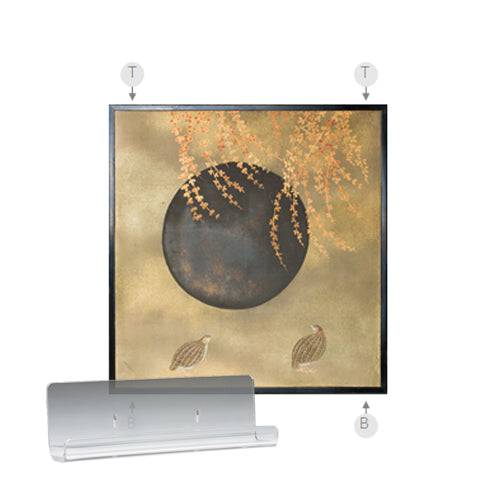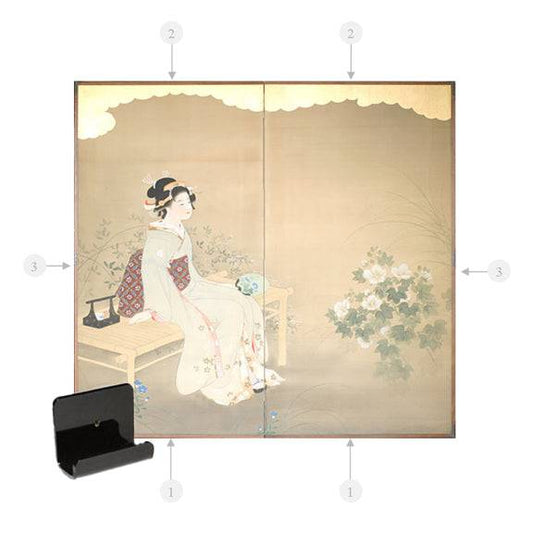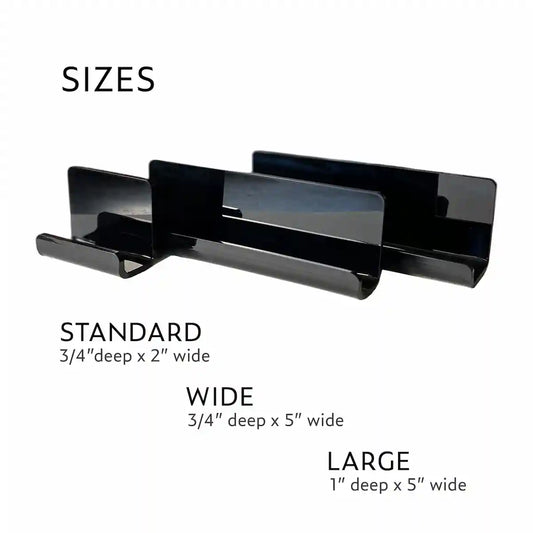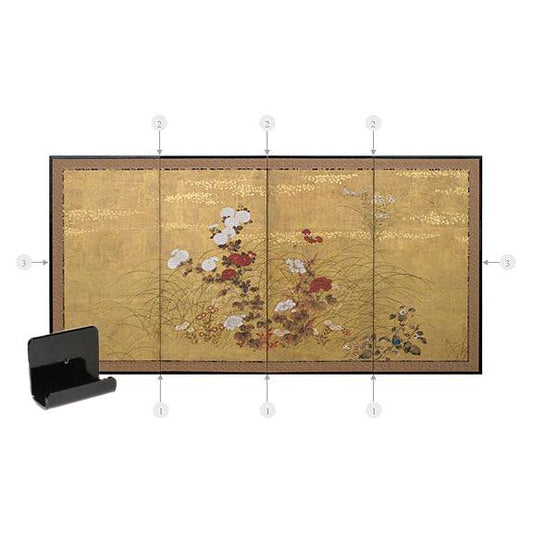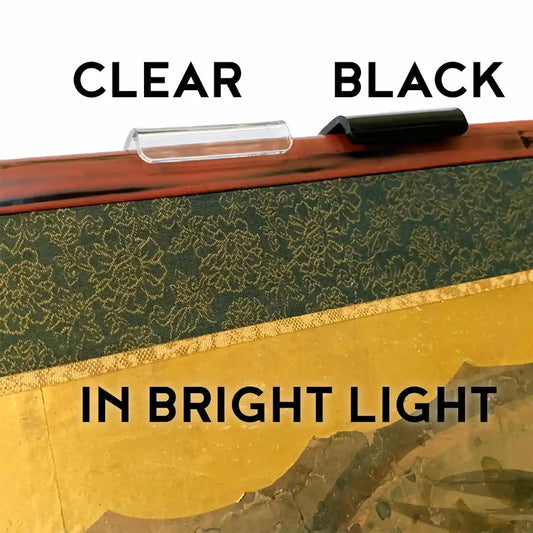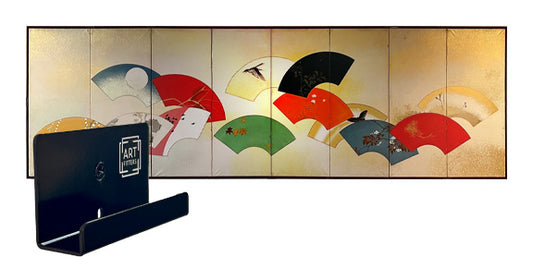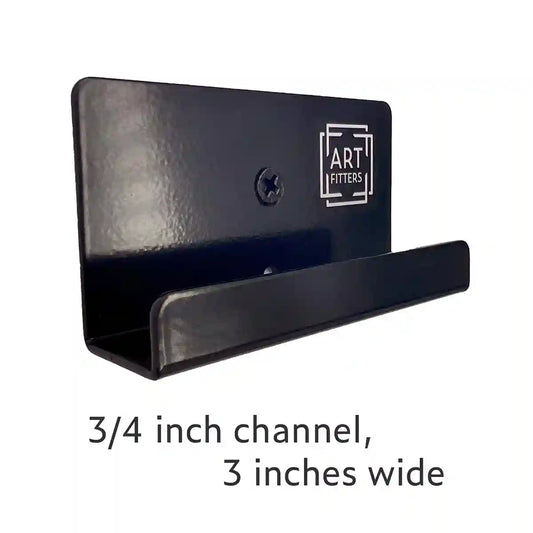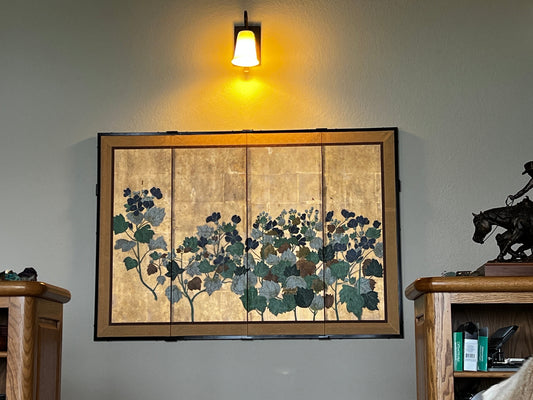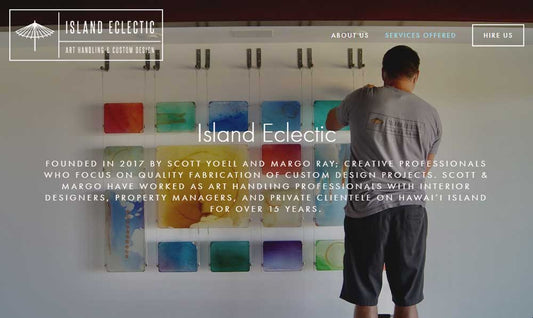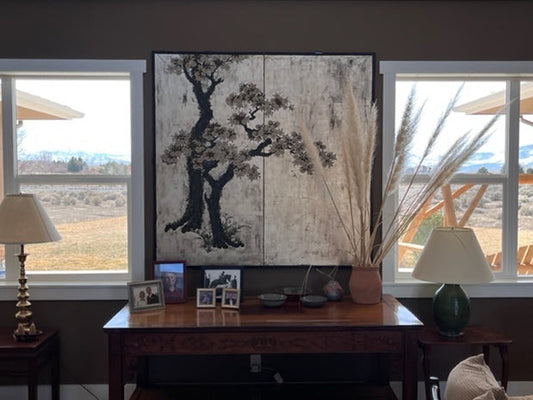Caring for the Lacquer on Byobu Screens: a Practical Guide, Expert Tips
Japanese folding screens, or byobu, are exquisite three-dimensional works of art that have a long and illustrious history. Their complex construction combines specialties of several different types of craftsmen and byobu present unique considerations for their care and handling.
Let's delve into the fascinating world of alluring lacquer edging, where I'll share some information and tips about what it is and how you can keep it beautiful for years to come. Although urushi lacquer has the ability to retain its beauty for centuries, it's also a delicate surface that needs a bit of knowledge to care for properly.
Whether you’re an Asian art collector or if you’ve just inherited your byobu from your family, this practical information will make it easy for you to care for your Japanese folding screen.
The magic of urushi lacquer:
Urushi, the natural resin extracted from the sap of the lacquer tree, has been an important component of Japanese art and craftsmanship for centuries. It provides a unique luster and texture to many art forms, including fine tableware and luxury items like writing boxes (suzuribako), inro, and leather items like Inden which is decorated with urushi.
The process of applying urushi lacquer is painstaking and time-consuming. It requires multiple layers of application and a controlled drying process between each layer. This meticulous attention to detail results in a stunning and durable material with a gorgeous sheen and refinement. 
Interestingly, many people are allergic to the sap of the lacquer tree. This led to a very specialized skill, with artisan families benefiting from both the exclusivity and continuity of knowledge over generations.
The lacquer edging of byobu is carefully crafted by these special artisans, apart from the painting and fabrics that comprise the rest of the byobu. It’s usually made of sugi, "Japanese cedar" wood which has been carefully dried to prevent warpage.
Care Instructions for Lacquer Edging
- Prevent scratches: This is the #1 most common form of damage to lacquer edging. It can easily get scratched, so be extra careful when using any sharp edges around it. When moving a byobu, grip the folded edges and lift, do not slide.
- Protect from sunlight and heat: Lacquer can discolor in direct sunlight, and heat can warp the wood structure. Keep your byobu away from direct sunlight and maintain a consistent room temperature and humidity.
- Dusting: To maintain the lacquer's shine and prevent dirt buildup, gently dust the surface with a soft, dry cloth. Microfiber, chamois, or cotton pads are our favorite. Regular dusting helps preserve the lacquer's glossy sheen.
- Removing debris: If there are any globs of dirt or debris, you can gently remove it with a damp cloth. Mist your microfiber or chamois with plain water. Make sure you're facing away from the screen so that you don't get any moisture on the lacquer or painted surface. Slowly and gently wipe across the area with the barely damp cloth and immediately dry it off with a separate cloth. Repeat as necessary until the gunk is completely removed.
- Chipped lacquer: If there are any chips in the lacquer, keep moisture away from the chipped area to prevent the wood from swelling and causing the lacquer to delaminate, crack, or blister. If you’re dusting or removing debris close to it, take extreme care to avoid the edges of the chipped area.
- Leave it alone: Once the lacquer is clean, keep it stable and maintain as necessary. Don't be tempted to use any oils or polishing products.
Choosing the Right Mounting Hardware for Your Byobu
Part of caring for the lacquer edging of your byobu is to use safe methods of display. High-quality mounting hardware like our lucite or stainless steel screen brackets are made especially for this purpose. Our selection of byobu mounting hardware is designed to provide secure support for your screens while minimizing distraction. They’ve been in use for over 25 years in collections all over the world, withstanding the test of time.
Hardware just for you, byobu
Here are a few important aspects of design that we’ve incorporated from decades of use and feedback in the Asian Art field.
Lucite Brackets
Our high-density museum-grade lucite has an ever-so-slight amount of flexibility, reducing the chance of scratching or gouging the lacquer surface. We use a specific high-grade of lucite that provides this bit of flexibility while also providing structural integrity. They are available in 3/4" or 1" deep. They are non-yellowing and exceptionally clear.
Heavy Duty Steel Adjustable Brackets
If your screen is over 25 lbs or unusually thick, these thick steel brackets will provide you the extra strength to support heavier loads. They're also adjustable to snugly fit the screen and lock it in place, even when it's irregular.
Color-matching
Our black lucite brackets are a glossy black which allow them to virtually become indistinguishable from the lacquer edging. If your screen is not black, our clear lucite brackets will allow you to display your byobu without visually breaking up the line of edging, letting the color shine through.
Rust-resistant
Vintage metal brackets can be prone to rusting, but our Hawaii-based company has designed these brackets to withstand the harsh conditions of a tropical climate.
Wall-mounted Design
Previous top-hanging methods of mounting can easily be dislodged or fail over time. They also tend to be highly visible and can be distracting. The lucite and stainless steel brackets anchor directly into the wall, giving support at structural points of the byobu to distribute the weight and prevent the chances of the byobu falling.

